#awae analysis
Explore tagged Tumblr posts
Text
AwaE's "Tale of the Magical Island" play

In the the sixth episode of Season 2 of Anne with an E entitled "I Protest Against Any Absolute Conclusion," the community of Avonlea comes together to put on the annual Christmas Pantomime. In this meta, I offer my analysis of this story within a story.
Not only does the plot of the panto draw heavily upon the story of Adam and Eve, but in my interpretation, it also allegorically serves as a way for Avonlea to use the medium of the theatre to process and come to grips with the threat that the grifters posed to their "magical island" community.
First, a brief synopsis of the play:
The opening number introduces the audience to an agrarian community residing on a "Magic Fantastical Island." Our hero, a farm boy, encounters a Fairy Princess who, seeing The Boy's hard work and goodness, bestows upon him a Golden Apple Tree which he vows to faithfully protect. A Dame happens upon the Golden Apple Tree and asks The Boy to hand her one of its fruits, but he refuses. When the Dame steals an apple, the Devil Lobster appears accompanied by a catchy tune. Things seem bleak when the Devil Lobster gets ahold of one of the apples, but a Prince on a noble steed arrives to vanquish the evil foe. However, the Devil Lobster thwarts the Prince by crushing his sword in his claws. As stormy skies swirl overhead, The Boy digs a large Black Hole with his trusty shovel and tricks the Devil Lobster into falling in. The hole swallows up the Devil Lobster, the day is saved, and they all lived happily ever after!
The Panto as Allegory for the Grifter Arc:
Ultimately, this play tells a simple story in which good triumphs over evil with a moral about resisting temptation and the perils of greed.
I would like to call attention to the fact that the apples are painted gold. Like their edenic counterpart, they symbolize sin and temptation, but in the context of this allegory, they also represent the enticing prospect of finding gold in Avonlea.
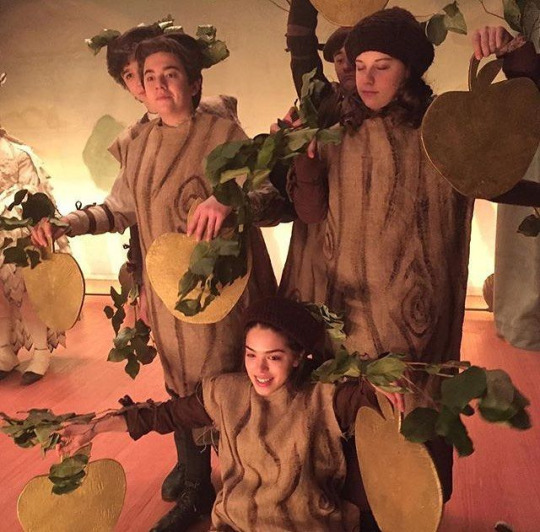
One of the Prince's lines suggests that if the Devil Lobster got his hands on the golden apples, it would bring spoil and rot upon the town's land ("You think you can turn our land into rot?/ I'm the unconquerable prince, lest you forgot!"). This parallels the threat that the mining operation posed to Avonlea—digging up the earth in the hopes of finding gold would have defiled the land and brought environmental destruction to the small farming town.
The Devil Lobster is defeated by falling into the Black Hole—this bears a striking resemblance to how Mr. Dunlop was ultimately caught by the townsfolk in S2E3 after he fell down the mining shaft at Nate's dig site.
It's significant that The Boy is the one who digs the hole to stop the Devil Lobster. The Boy represents the every child, and more specifically, the youth of Avonlea. While the adults of the town were easily swindled by Nate and Mr. Dunlop's gold scheme, it was children, specifically Anne, Diana, and to some extent Jerry, who were able to see through the grifters' ruse, put all the pieces together, and try to stop them from getting away with their scheme.
The version of events rendered in the play puts a more heroic spin on the role The Boy plays in thwarting the evildoer. He actively sets a trap for the Devil Lobster using the pivotal prop—a shovel—to do so. Since a shovel is a tool of excavation, this reflects how the excavation site Nate initially used to stage his con became a trap and holding place for Dunlop when their ruse came crashing down.
In reality, our child heroes were not so active nor successful in thwarting Nate and Dunlop. Only Dunlop was captured whereas Nate got away with the money. After their sleuthing in Charlottetown, Anne and Diana tried to warn the Barrys about what they'd discovered, but Diana's mother wouldn't hear any of it. Anne told Marilla who thankfully believed her, but by then it was too late, and the two literally got tied up. Meanwhile, Jerry had his own moment of realization, finally recognizing the boarders as the thieves who mugged him and stole his money in the finale of season 1. He tried to throw a punch at Nate, but got beat up again and fell unconscious. Mr. Dunlop only fell into the hole, not by any of the children's doing, but because he and Nate turned against each other.
The play credits the children as the real heroes in the story and offers a happier ending than the real version of events in which the community is still reeling from the financial blow of the con, lingering distrust—especially of outsiders—and feelings of regret and shame. In particular, we see how Marilla blames herself for inviting the boarders into their community and how the fallout of the the con hits the Barrys especially hard, manifesting as marital conflict between Diana's parents. The play's happier version of events helps the town process the ordeal they've gone through and imparts a moral they learned from the experience.
Each Character's Role in the Panto:
Anne as The Boy: Like the show itself, Anne is the protagonist of the play, our plucky hero. Her stepping into the role of The Boy was foreshadowed with her trip to Carmody earlier in the episode during which she dressed up like a boy. It's also fitting that Anne plays this part since she was the one who put all the clues together about the boarders' true intentions. The fact that Anne replaces Josie in the lead role of the play, as well as Matthew's last-minute substitution for Billy as the Owl, signifies that Anne and the Cuthberts are forces of progressive change in Avonlea.
Diana as the Fairy Princess: Most characters, including Anne, see Diana as the angelic image of a proper lady. She's generous, sweet, beautiful, and comes from a wealthy family. Like her Fairy Princess counterpart who awards The Boy for his hard work, Diana sees Anne's virtues even when others don't, and overall is a supportive and generous friend.
Matthew as the Owl: Matthew stepping into this role is foreshadowed in his flashback with his brother Michael in which a young Matthew can be seen whittling an owl figurine. Owls are associated with wisdom and true sight. This is a fitting choice for a narrator character in a play and also suits Matthew who demonstrates real wisdom.
Mr. Lynde as the Devil Lobster: In S2E2, a townsperson remarks that Mr. Lynde shows no moderation whatsoever as he piles his plate full of sweets. The Devil Lobster is the embodiment of greed and avarice and proclaims that he is "simply shimmering with sin." Tamatoa who? I only know the Devil Lobster! Also, it's clear that Rachel is super into seeing her husband acting a bit naughty and decided to have some fun with this casting choice.
The minister as the Fair Dame: Seeing the minister in drag is played for comedic effect. The Dame plays the part of Eve taking the apple from the Garden of Eden. While the minister was skeptical about the gold testing business, he did not dissuade the town's eagerness for material riches and therefore also shares responsibility for inviting avarice into Avonlea.
Mr. Phillips as the "Unconquerable" Prince: This is also played for laughs as it demonstrates Mr. Phillip's inflated sense of ego. He envisions himself as a gallant hero when in reality, he is anything but. The Prince is ineffectual at fighting off the Devil Lobster and runs away like a coward, much like how the adults and authority figures of Avonlea were completely bamboozled by the grifters.
Rachel Lynde as Queen Victoria: Perhaps a narcissistic casting choice on the part of Rachel, but let's be real, she was the artistic director behind this whole production and knocked it out of the park. Pop off, queen!
I hope you enjoyed this discussion of the "play within a play" in S2E6 of Anne with and E. This is probably my favorite episode in the whole series due to its many wholesome moments, especially Jerry giving Anne his Christmas card, Gilbert and Bash coming over to the Cuthbert's for Christmas dinner, and Matthew overcoming his stage fright. 10/10 would recommend. Of course the Christmas episode absolutely slaps!
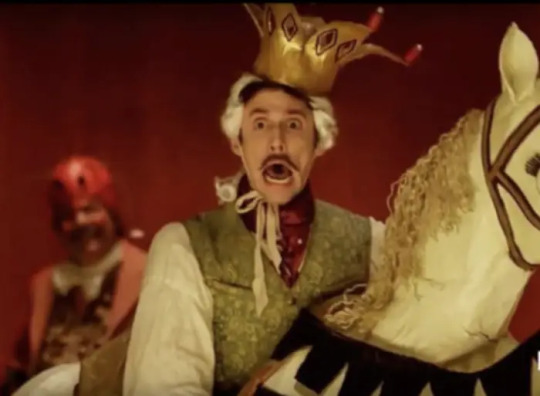
#anne with an e#awae#awae s2e6#anne with an e s2e6#Christmas pantomime#meta#story within a story#i protest against any absolute conclusion#christmas panto#anne shirly cuthbert#matthew cuthbert#diana barry#mr. phillips#thomas lynde#rachel lynde#awae meta#anne with an e meta#i love media analysis#episode of all time#my favorite episode#i love this show#the devil lobster song slaps way harder than it has any right to#lowkey appreciation for the grifter arc#i know it's unpopular#but it serves a purpose#and presents a conflict that affects the whole community#and the natural word itself#extractivism is presented as an existential threat#ecofeminist slay for awae wbk#it makes up for the liberalism of “a gender balance” in S3
17 notes
·
View notes
Text
tomorrow won't come for those without, or exploring disconnection in the procession of mental illness and trauma
SPOILER? WARNING: This analysis assumes you have played the game's noise ending at least once. I'll provide screengrabs of things where I can. I do believe it's a masterpiece of a game, and would highly recommend it.
CONTENT WARNING: Discussions and allusions to suicide, severe mental illness, grief and religious trauma/criticisms of religion.
Tomorrow won't come for those without (TWC for short) is really... confusing. To the extent where I've got a notebook with pasted cut-outs of dialogue and imagery simply to try and... understand it.
As with much of the things I write about, I don't think it's designed to be understood - etherane's work often revolves around very personal and complex depictions of mental illness, as is evident from the hello charlotte series, so this is to be expected.
I want to discuss Rem, celestials and the Dithyrambs in this, saving conversations of Mari and the Choir for when I better understand it.
Rem is not human, he's a celestial - this is revealed in the noise ending, where he melts into his true form. We can also determine what type of celestial Rem is, from the way his form manifests.
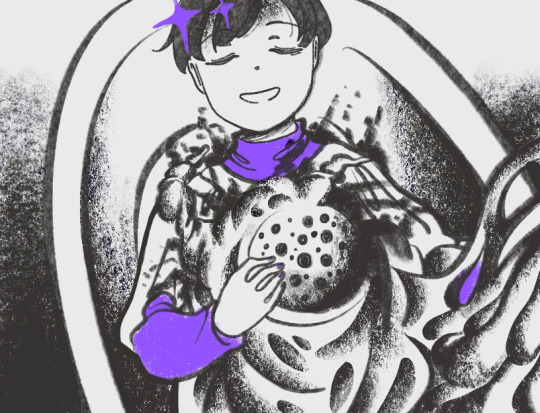

Domain: Shadow; The Eldest. Distorts continuity, converting affected areas into liminal spaces.
Now, at first, I spent much of my time trying to associate these cards (and as such, the Celestials) to specific mental illnesses, but I realised it didn't work. While 'Domain: Post-Truth' (Card Type 3) could be associated with PTSD and 'Domain: Thighs' (Card Type 12) could be associated with body dysmorphia, many cards do not fit a specific mental illness, and much of them instead reference dissociation or other specific symptoms. It's somewhat implied Mari had the celestial present in Card Type 12.
It makes sense for a different universe to identify mental illness in a different way, considering there's little evidence that the characters have information on "pre-humanity". Instead of our current system surrounding mental health, the Choir demonises Celestials, and attempts to 'purify' them.
One particular line during the noise ending stands out to me.
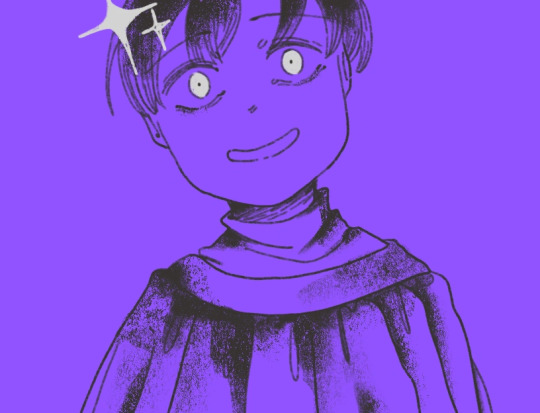
"Tell me, how do I stop the noise in my head?"
Ori is not, by any means, a stable character. That's not to say Rem is stable, but Ori is somewhat less rational, losing his mind over the Choir and his Rosary. He devotedly follows the Conductor up until the noise ending, where he loses his grip on purity and reality, wanting to stay in the 'Dark' and '...play in the forest', rejecting the suppression of creativity by the Conductor.
The Dithyrambs is the noise in Ori's head - somewhat implied to be caused by the celestial. When Ori first wakes up, the Rosary insists that he must "...find the source of the Dithyrambs," perhaps implying that the Rosary is corrupt in the same way Ori and the Choir are, although it does not state to destroy the source. This noise causes Ori a lot of pain.
Alright. That is my discussion of the actual evidence present in the game. The next section is going to be a lot of personal speculation, on what I feel the game is representing.
I compare the relationship between Ori and Rem to that of Charles and Scarlett in Hello Charlotte 3, although it is framed differently. Instead of Rem being portrayed as horrific and irrational, Rem is scared, small; humanised, distrustful.
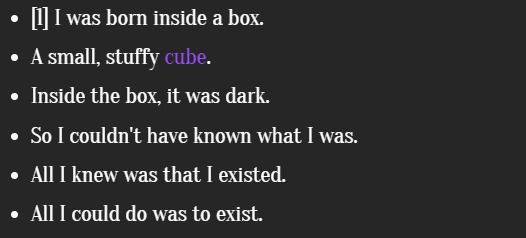

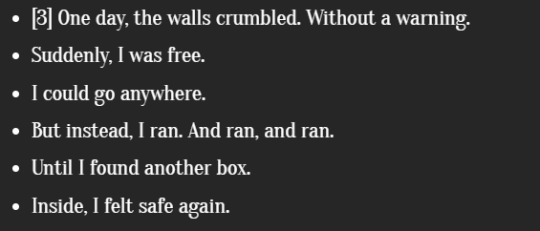
I believe that Scarlett Eyler and Rem represent fundamentally the same thing - intrusive thoughts, anxiety and OCD. Unlike Scarlett, who is fixated on tormenting Charles, Rem's representation of this manifests toward himself, and his desire to be caged for safety.
Fundamentally, OCD is a disorder surrounding fear. As much as it feels like your brain just, absolutely fucking hates you, it's as scared as you are. In a similar way, Rem is terrified of the liminal hotel that he and Ori reside in, and he's terrified of the outside world. He responds by shutting himself away - rather than Ori's desire to reach the end of the veils, Rem begins the game locked in a bathroom, and must be coaxed out.
Rem is incredibly "human" for a nonhuman being. Humanisation of intrusive thoughts is an interesting concept, especially considering the demon Scarlett Eyler was in HC3. Rem is far more disconnected from Ori, far more skeptical of the world around them. Rem isn't there to punish, but more to question and doubt, contrasting with Ori's inherently trusting nature.
Hmm. I feel like I haven't properly explained it, but I hope it somewhat makes sense.
Despite that, this is just my own interpretation of it, and I don't feel it really aligns with the game, necessarily. It's just me. lol.
song i listened to while writing:
I enjoy playing TWC with the BGM turned down and this song playing. It makes me feel pure, like my regrets can be washed off. I suppose that's not the point of TWC LMAOO.
#tomorrow won't come for those without#twc game#etherane#hello charlotte#game analysis#sentience's stuff#Spotify
43 notes
·
View notes
Text
So I happen to chance upon this blog which talks about the little cold war between Hange and Levi after he revived Armin instead of Erwin in the RtS arc.
Honestly, this is something which I did not delve deeper because it was just too much things happening for that whole sequence when I first watched it. After reading that analysis, and also chancing another post allegedly claiming that Hange's character is too shallow because she didnt show much emotion here when Erwin died, I just had to do something.
So, I just had to dig deeper into the manga and anime again, with the little analysis out there that highlighted Hange's character especially during that scene and decided to split this post into 3 parts, focusinf on Hange's cold war, or how she responded to Levi's decision.
Caution: Certain degree of Levihan lens is on.
--------------
Part 1: Rooftop
Part 2: Walltop
Part 3.1: Double date
Part 3.2: Double date/ Basement
---------------
Part 1: Rooftop
So, that blog talked about the difference betwen how Hange is drawn in the anime vs the manga, and I can agree that the drawing in the manga does indicate a little bit more about Hange's displeasure towards Levi for choosing Armin. I mean, she must have felt so disappointed and betrayed at the same time, after all her therapeutic talk to Mikasa to calm her down, only to lose her squad, Moblit, her commander and her eye. She lost a lot more than Levi in this battle, so of course she will be angry with Levi.
So, here are the panels in the manga which see her looking away from Levi

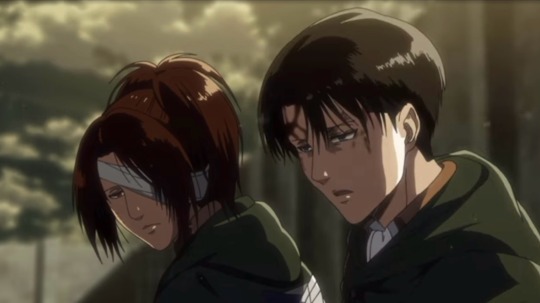
I also looked into Levi's dialogue at the start, when Floch questioned his decision. Here, Hange looked away while Levi looked towards Floch before talking but in the anime, both of them are looking at Erwin.
So I am guessing that in the manga, there is basically little or no interaction at all between Hange and Levi and Hange made it clear to Levi with her non-verbals. Also, I find it strange that Levi talked about forgiveness. Now, he may mean 2 things in the context of Floch questioning him:-
1) Will you forgive this guy (Levi) (direct reply to Floch but indirect expression to Hange)
Now, I know that the sub translated it as forgive him (Erwin). So I did a Google translation using speaker and microphone. And double checked that the pronounciation Google got and the one Levi said is the same. This is what I got for that paragraph.

Now, I know I am just taking the translation literally by Google and it may be way way off because of how the language is used. So please forgive me if this is totally wrong ���
So, Floch was questioning Levi, Hange is avoiding Levi and Levi started his speech, explaining the reason for his choice.
If he had intended to ask Floch and Hange to forgive him, this gives an early indication that he can sense the emotional impact his decision has on Floch and Hange. Indeed, Floch didnt even join in the family discussion when the Armin woke up.
2) Will you forgive this guy (Erwin)?
If he had intended to ask them to forgive Erwin for his conflicting dreams, then I find it quite weird because that would mean that he had to tell them the real motivation of Erwin's drive to led Humanity against the Titans. Would he do that to Floch who is a subordinate? He might have told Hange everything and therefore asking her to forgive Erwin (and thereby understanding his decision). Then that would mean that Levi is basically ignoring Floch as he and Hange watched Erwin take his last breathes. So Floch's "Captain why?" Is sort of a cue for Levi to start talking to break the ice between him and Hange.
Also, isnt Erwin's devil characteristics (ruthlessness, determination, etc etc) the things the Floch and Hange needed for Erwin to be revived and led the Survey Corps after the huge losses? So, why would Levi ask them to forgive Erwin?
I am confused with the language here but these are just some of my observations and curiosities.
So anyway, whether it is the manga drawing of Hange looking away from Levi, or his dialouge, it does make sense to me that there are some tension between her and Levi.
--------------
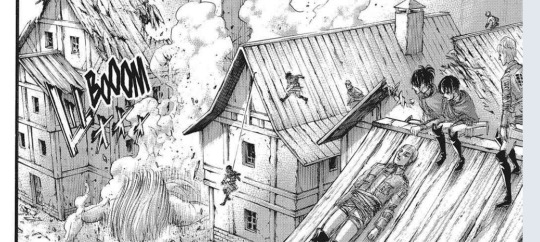
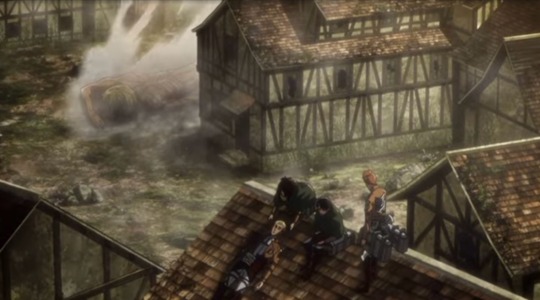
Now the other panel where the anime draw her looking at Erwin while the manga draw otherwise is when Armin come out of his titan body.
Ok, this scene should be familiar to all Levihan because remember how Levi will always stare death in the eyes when his comrades die but not at Hange in 132? This scene has been mentioned because he looked at Erwin as he die while Hange looked away, in the manga at least.
Similarly, there can be 2 reasons why:-
1) there is still tension between her and Levi and she does not want to have any interaction with him
2) or, she wanted to check that Armin's transformation is ok. Afterall, this is also the first time the Survey Corp stole the power of a titan and they may not know how the whole thing works still. But do note, that she is totally not her "Eren I want to touch that hand!" self.
Imagine Hange, having no reaction to the first time she sees a titan shifter gaining power. I think only Reiss family and the Marleyan warriors got to see that scene but Hange showed no reaction or excitement at all. So, please convince me that she is not sad at Erwin's death. She is obviously very very affected by Erwin's death. Probably she might also be thinking that Erwin could have been the one emerging out of that titan body.
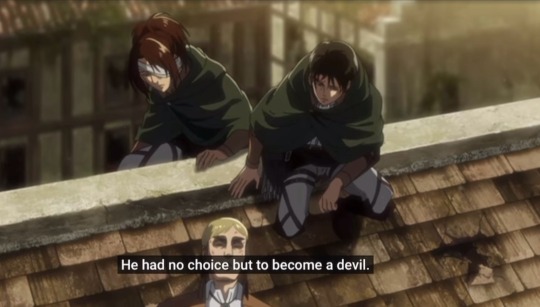
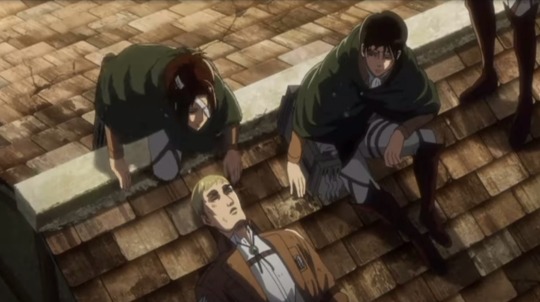
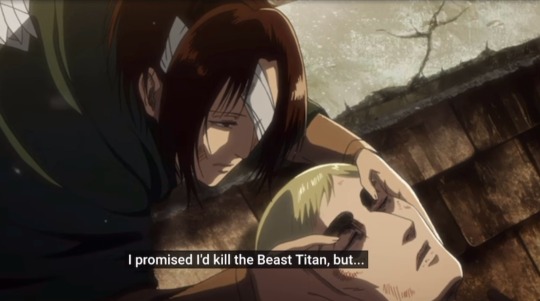
And in all these scenes, when Levi is talking, Hange did not respond, verbally or non-verbally.
The only respond she gave was after Levi gave his comforting speech to Erwin, that she said "he's dead". It is as if Hange is saying, there is no point in comforting him cos he is dead. But does Hange felt comforted by Levi's words? I dont think so.
So I do think that Hange is definitely angry at Levi and this little cold war between the 2 of them are starting to brew at the roof top here.
Plus, I also just want to mention how in-character Isyama has written both Hange and Levi. Remember how Hange used a cockroach to cover up her frustration after talking to Sannes? How she quietly sit down at the wall while thinking about her fears after taking her anger out at Nick? She hides her emotions and it is also clear that she is doing that here as she is processing her grief.
Levi, on the other hand, is so in-character with how he comforting a dying soldier: Complimenting them, affirming them and carrying on their strength and resolute on his shoulder. (I always find it weird that he complimented Erwin but now I get it. It is his way to encourage or send off the dying)
A short clip on the rooftop scene and Levi sending off his soldier in episode 9.
Levihan's Cold War [Part 1] [Part 2] [Part 3.1] [Part 3.2]
#aot#attack on titan#hange zoe#shingeki no kyojin#snk#levi ackerman#levihan#manga analysis#levihan analysis#hange analysis
23 notes
·
View notes
Text
Asexual Awareness Week and BG3
Below the cut is 1,100+ words of interpreting Wyll Ravengard as demisexual. As an asexual person, I relate to many of Wyll's desires and experiences. That relation has lead me to this interpretation of him as a character. Interpretation is the key word here. This is simply another way view this character and gain insight. It's obviously extremely biased, which is why I put the word count first. So if your interested in analysis that is probably more projection than interpretation, I bring you this.
Wyll is portrayed as an almost incurable romantic. He constantly references stories, tales, fables, and myths when discussing his romantic desires. Romance heavily influences his sexual desires as well. It is practically inherent to his sexual attraction. While this can be viewed as idealism, I want to propose an alternative outlook. One where he hasn’t conflated romance and sexuality, but rather one where romance is vital to his sexuality.
Wyll talks little of his sexual habits outside of when romance is being discussed. These quotes are about dancing, but they happen while you’re romancing him.
“Don't worry! It's not really about the dance, it's about who's we're dancing with.”
“I had years of lessons but in truth it's all about your partner.”
Like when you’re romancing most companions, many things said have multiple meanings or implications. He’s telling you that while he does enjoy sex, it’s who you’re doing it with that makes it truly pleasurable. I think Wyll desires the intimacy that comes from sex more than the act itself. He’s drawn to the connection it brings rather than the pleasure.
At one point he describes his sexual history as “tight-laced” when he’s talking with Shadowheart. He says, “I was never one to sew my wild oats.” Apparently Wyll hasn’t had to practice and exercise much sexual restraint in his life. It’s easy to control one’s sexual desires when you don’t really feel them to begin with.
While he can understand people’s various sexual habits, I don’t think he can relate. He doesn’t see the appeal to casual sex. Sex doesn’t feel satisfying to him without connection. He has impulses, and sometimes he wants to act on them, but they don’t seem worth it. He doesn’t derive enough pleasure from the act alone to pursue it. Romantic relationships already provide sex, and he values love above all else. Why would he want anything else?
“Eh-heh, well, give it some time! Develop a bond, and…maybe I'll show you a move or two.”
“Hm, think of love as a strong ale, or a warm fire. Is the clang of steel on steel not made more satisfying by the pleasures that come after?”
Doesn’t sex feel decidedly better when you’re having it with someone you care for? How satisfactory can it be without attachment? How truly enjoyable is it without a bond?
“I value affection, over fun. A lasting memory over a passing fancy.”
“But I’ve always been a bit old-fashioned on these matters. I find more pleasure in a courtly dance, than a loveless fling.”
Isn’t it more fulfilling to love someone than lust for them? Do you not feel more fulfilled from loving someone than sleeping with them? Is sex even worth having without love?
“Gods I want you, but I can't take your body without taking your heart.”
Can Wyll even give you his body without giving you his heart? They seem to go hand in hand for him. Love is essential to his sexual enjoyment, he doesn’t seem to experience sexual desire without it. Love might be the only way he can desire it. Here is an interaction between him and Astarion.
Astarion: "You didn’t kiss anyone until you were fifteen?! Gods. What a tragic, sheltered life."
Wyll: "Sheltered? Not at all! I was exposed to all manner of riot and revelry. Hells, my father even urged me on once or twice."
His romantic tendencies don’t come from inexperience or prudishness. Wyll isn’t oblivious or naive when it comes to sex. He’s been exposed and even encouraged to have it. While he might call it “proper”, Wyll is aware his way of courting isn’t for everyone. Your sexual habits might not align with his personal wants, but he won’t respect you any less for yours. Wyll does not believe your sex life effects your worth. If anything, he feels his wants are regressive.
“But I still keep faith in the old tales of love. The ‘once upon a times’ and the ‘happily ever-afters’.”
“I'd, like to do this the proper way. The way of the old romances sung by the bards.”
“But I’ve always been a bit old-fashioned on these matters.”
He constantly uses the word “old” to describe his courting methods. He’s acknowledges these desires aren’t modern, and by referencing fairytales he’s aware they might even be fictious. He calls his sexual habits “tight-laced”, his romantic intentions as “old-fashioned”. They’re not exactly said negatively, but more with the acknowledgment that his wants come across as restrictive. When the habits of today hold no appeal to you, you feel stuck in the past. What are you supposed to do when fiction seems to be the only place where romance is done how you’d like?
If you have sex with Mizora, these are some of his responses.
“You shared your body with the fiend who holds my soul.”
“We danced! We made a connection…and you severed it for a single bite of the Hells?”
This next quote is how he responds if you say, ‘Can you blame me? It’s not like you’ve been putting out.’
“Is that what matters to you? Sex without union? Heat without heart? Did you not take joy in the dance?”
Now obviously the biggest issue is you slept with the being that holds his soul. However, he says these things because he thought you felt the same way about sex as he does. He thought sex was an act as precious to you as it was to him. He thought you also prioritized love over physicality. He thought you enjoyed the way things were going, clearly he was. Had he known you didn’t feel the same, he probably never would’ve pursued you.
Wyll doesn’t do casual, he doesn’t do “let’s see where this goes”. He seems like the type to pursue every romance with the intention of marriage. No, he won’t propose on the first date. He won’t even necessarily think either of you are compatible. However, that’s the whole point of courting! It’s to test the potential of forever. He likes agreements, he likes pacts. He wants certainty, reliability.
Yes, he probably hasn't had much firsthand experience with relationships. Yes, all these things can be seen as restraint. Yes, they can be seen as repression. They can also be seen as someone who knows himself and genuinely wants “happily ever after”. Someone who’s aware of what he’s asking and wants you to desire it as well. Maybe love is the only way he can connect to his sexual desires. Maybe love is important to him because it’s the only way he can truly enjoy sex. Love might be the only thing that lets him experience sex like everyone else. Maybe love is the only thing that let's him feel sex like it’s described in fantasy. Maybe he’s lost in that fantasy, or maybe he’s just demisexual.
#baldur's gate 3#bg3#wyll ravengard#bg3 wyll#asexual awareness week#asexual#demisexual#astarion#I have another one I'm working on for Astarion#It's about sex repulsion and amanormativity#🎮 bg3#🎮 mine
129 notes
·
View notes
Text
soo if it wazn't obviouz . ive been sorta crazy about thiz song for a hot minute [itz my blog aesthetic atm like c'mon] and i feel like itz about time i give it a proper analysis
"I Should Be Unfinished" – Dobu no Awa with the boy . HV! Tony
"From right to left over and over and over and over again" – thiz could reprezent the fact Tony feelz stuck in that neverending loop of suffering . and how he seez no point in trying to live anymore
"I feel my ears overflowing with blood" – not only iz thiz a parallel to DHMIS 2 . but i also think it fitz in with HV! Tonyz lore phenomenally ; the "blood" can reprezent "life" in thiz scenario and . given who he iz after all . thiz "blood" iz no longer a part of him – figuratively and literally
"I'm tired of hearing it // I've had enough of this // I've memorized it // And yet I've fallen into the habit of pretending that I had forgotten" – once again . representative of the neverending cycle he feelz trapped in ; could also symbolize the fact people around him are alwayz of the mentality of "it getz better !! don't give up !!" and that he feelz sick of hearing thiz . since hez been around for so long and "nothing haz gotten better" – still . he haz thiz facade of arrogance that he uzez to brush off said commentz and "forget" about them . and the constant reminderz that they bring
"It's futile, no matter how much time I wasted // I'm still unfinished" – Tony seez himself az a very one dimensional person – he feelz like . even with all the time hez spent in the world . he hazn't been able to recover from The Event ; he still feelz incomplete becauze of the fact he can't let go . hence him being "Unfinished"
"'Like that–' // 'Such a thing–' // 'What's happened?' // 'Was that not it?'" – i feel like thiz part iz actually in relation to the fact hez been through so much and . in each era of hiz life . he hazn't been able to find something – someone – that would help him feel alive and / or hazn't ended horribly
"Even if I cried out // Even if I tore my hair // You should have a look, // It's not like I can disappear" – still . deep down . he cravez connection and having a sense of safety and belonging – he wantz someone to look at him with compassion . even if he'z so broken and bruized ; he cannot disappear completely . he'z already dead . so might az well forget looking forward to a peaceful . everlasting slumber
"Why don't we end that escape drama? // are you worn out? Let's take a break..." – personally . i see thiz az the shift in HV! Tonyz life – it goez from the bleak . isolated everyday to a slightly more tolerable and exciting experience after meeting Sketch ; stop running . even for just a moment . and letz sit down together . breathe and take a break – you must be terribly tired ...
"Suppose you've wasted that much to complete it? // Can you really say that it's right, in all sincerity, // Without averting your eyes?" – now met with care and love from people around him . he can't accept it – he must prove to people that someone az wretched az him should be left to rot . not be cared for . az hez just dead weight ; i also think that thiz iz a genuine question that he pozez to otherz . az he cannot understand completely why or how hiz loved onez can find themselves to put up with him – maybe by finding an answer . he can finally start learning to value himself properly az well
"Even if I grieved // Even if I made a fuss // You should have a look at what remains of me" – even with all hiz flawz . maybe Tony can at least accept that he still cravez to form a bond with otherz – to have something he once had again . even if he'z now "wrong" . "broken" . "Unfinished"
"I don't want to deceive myself anymore. // Are you worn out? Then let's take a break." – you're with people who love you and who you love – stop running from the truth . sit down . take a break.
"Even if I cried // Even if I was sorry // You should have a look // Give it back to them!" – i have shown you all there iz to show – all the remorse and how much i lament thiz event – give thiz happiness back to him . to her . to everyone else ; give it back. to them.
"This is how it should be, I'm alright..." – "Unfinished" . "broken" and "wrong" – thatz all i'll ever be . and thatz fine by me ; nothing can be done to alter who i am . and thatz just how thingz are going to be
"This is how it should be. I'm alright. // Hey, I'm worn out already // Goodnight..." – "Unfinished" . "broken" and "wrong" . thatz it.
#not to mention the songz mv also – that and the lyricz combined together really make it fantastic#i wish it waz on Spotify too . cuz it would probably be my top song of 2025#like . itz very relatable#unfortunately#://#spooky's soliloquies#dhmis#dhmis au#high voltage au#dhmis tony#dhmis hv tony#im sorry for thiz – cringe and dumb and stupid yadda yadda#i just feel sorta dull . but these analyses do make me feel a tiny bit better#like . i feel like i can write mini essayz and express my point of view sorta okay-ish#never am i ever gonna stop projecting onto that clock vampyre thing#kissing him
5 notes
·
View notes
Text
Analysing lines from the Deltarune: Chapter 1 en lang file every two days until the next chapters: #41 (lines 169-172)
* KRISP!! * awa... ver sorz... * tem already have partner… * tem partner with... * EG!!! * (It's a black-and-white hardboiled egg.) * (Sadly, seems like it already has a partner.)
<! --
"obj_tem_school_slash_Other_10_gml_8_0": "* KRISP!^1!&* awa..^1. ver sorz..^1.&* tem already have partner…/%", "obj_tem_school_slash_Other_10_gml_13_0": "* tem partner with..^1.&* EG!!!/%", "obj_tem_school_slash_Other_10_gml_20_0": "* (It's a black-and-white hardboiled egg.)/", "obj_tem_school_slash_Other_10_gml_21_0": "* (Sadly, seems like it already has a partner.)/%",
-- >
tem… WATCH EGG!!! eg… wil HATCH!!! tem… PROUD PARENT!!
Lines from one of the Temmies in UNDERTALE; it seems she likes eggs.
As much as we would want to mention Susie, it may be more fitting in nearly a hundred more lines.
Do know that those lines will be referenced again later.
Either way, very heavy analysis and hours of thinking about those lines and the story of DELTARUNE lead us to believe that this is a joke which slightly helps the plot by making it so that everyone has a partner before Susie arrives aside from Kris, leading to them getting grouped together. (slight scarasm (understatement of the century (hyperbole)))
3 notes
·
View notes
Text
Akatsuki no Yona Typing Redone: Yona
Since I just rewatched the anime and I'm rereading the manga. I think I should update the typing. I have learned a lot more after my first sorting. While it's mostly the same, I will give each character more detailed analysis so each character will get one post dedicated to them alone. And other minor characters will be posted together in a 'bonus' post.
Let's start with our titular protagonist - Yona.
Yona

Typing: ENFJ 1w2 sp/so
Sorting: Snake primary (Badger model) and Lion secondary (Badger model)
Our beloved Yona. This is the character I resonated with the most out of all other characters. I totally understand her 'I need to be stronger' and 'I want to protect people dearest to me, even if I have to risk my life' and she is just a breath of fresh air for me. But that's not the point. Yona started off as a naïve, airy-fairy princess ignorant of the world around her. But that was her immaturity (she was raised sheltered, spoiled and never having to do anything in her life). It could be said that her personality starts to really develop after she got driven out of the castle.
She is Fe-dom, her emotions are immediate and upfront. Whenever she feels something, she says it out loud. But she also knows how to say it in a way that's appropriate to the situation. She is an organizer (EJs) but she doesn't do it through systems and logic like Yoon (ESTJ) does. Instead she does it through emotional motivation and finding consensus. Yona bonds herself very readily to the people around her and usually prioritize others feelings first in every single one of her decisions. She rages for them. She fights for them. Their pain is her pain and their grief is her grief. It's Fe that allows her to understand the pain of everyone around her and how she would want it to be better (Fe-Ni + enneagram 1).
She also knows exactly what to say to get under the skin of just about everyone. She knows exactly what to say to Seiryuu villagers and to Sinha. She intuitively knows that Sinha isn't dangerous and there is no reason to fear him. She knows his pain and what he has been through and she knows 'his soul'. All that based on very little information (his hand is warm and Ao loves him). That is very Ni.
Afterward, she knows exactly what Sinha needs to hear the most 'You are not destructive'. That sentence alone addresses all the trauma he has been through. And Yona just casually knows it and says exactly that. Yona is also occasionally heavily symbolic (comparing Sinha to the moon and Zeno to the sun) and keeps bigger picture in mind at all time. She is also very reckless and opportunistic. She shows heavy use of Se a lot but her Se is still pretty weak (doesn't know her limit and needs to be reminded by sensors around her to stop). It's her Ni-Se that allows her to sense that something is happening in Awa (people smiles feel fake - something even Yoon doesn't notice) and later when Li Hazara was about to invade Kouka.
Yona is driven by her very strong moral compass and anger at injustices. But those anger isn't 'pure' anger, it's righteousness. She believes there are certain things that cannot be forgiven and certain action that is honorable. And she will uphold it even if she has to work twice as hard or risk herself because they are the 'right' thing to do. That is healthy enneagram 1w2.
While she has a very strong judgment, she doesn't project it outward to other people. She focuses on bettering herself first to deserve and protect people around her. When something doesn't feel right in her gut (like when she told Gigan Senjou she'll pick Senjusou again because the first time Jaeha helped her) she won't back down on it. She will do it 'right'. She is very firm on her principle and if something isn't right, she'll call on it. But she also has strong 2 wing that lends in helpfulness and softer touch to her enneagram 1. She doesn't shove her beliefs on other people but instead seek to work together with them to get the desired outcome (wing 2 + Fe).
Her sorting is pretty simple. She is Snake primary, her motivation is 'I want to protect people that are dear to me'. This concept is further expanded when she made it her mission to look after the kingdom her father 'loves' so much. Her father was one of the most important people in her circle, so what he loves (his ideal of peace, his kingdom, his people) is also hers to protect as well. Then she starts bonding with people left and right but not in a Badger way. She takes them in and made them hers.
She is willing to do everything to make sure her people is safe. And her biggest fear is to have anyone of her people got hurt or killed. But her Snake primary also made her vulnerable the most when Suwon killed King Il. That betrayal shook her world to the core. But she didn't let it burn her primary, instead she heals through her connections with other people (first in Wind Tribe - Taeyeon, Mundeok and other people in Wind Tribe. Then the dragons and people of Awa). I think Mundeok and the guys in Wind tribe save her from burning - 'everyone in the wind tribe is a family. You are our family now'. I think it's precisely this that saves her from burning.
Her secondary is Lion. She is honest to the fault, react from the gut and stand by her truth. Her strength is in her solid willpower. She pushes on when things get hard. She stands her ground against all adversary. She is a natural leader who inspires everyone around her through the strength of character and sense of righteousness (healthy Lion secondary). She can't stand sitting on the side line doing nothing. She needs to get into actions and react. Doing nothing limits her because she only finds her strength when she faces adversary head on. Like when she rushes out to confront Taejun (I didn't leave Wind Tribe to hide under Hak forever, there is something I must do now).
I doubted it a bit because what she said to Jaeha and Sinha sometimes felt like a deliberate manipulation (saying it's alright if you don't want to come with her, but stick around and suggests it. Saying what they want/need to hear. Presenting herself in a way that they will have to come with her). For a Snake sec like me, that's something I'd say because I know it'll work. But that doesn't align with Yona's character so I go with Lion secondary. That goes to show how different secondary can come up with the same motive and action only with different flavor internally.
But she also values fair play and hard work. Which shows strong Badger secondary model. She is willing to put in hard work (200 arrows a night is a LOT, especially if you've never handled a bow before) and wants to do things fair and square. She never looks for shortcuts. She will do things the right way and put in the efforts until it happens. She's also very caring and helpful in a Badger sec way as well. She knows she isn't strong enough so she has to put in the effort to make herself stronger.
All in all, a very compelling and inspirational character. She reminds me that no matter what is happening to you right now. Only you can tell you who you are and what you can be. You can let them break you, or you can carry it and make sure what happens to you never happen to anyone else. And only you can make that choice to protect what is dear to you and take the responsibility and hard work that comes with it. Only you can make yourself worthy, just like how Yona molds herself into a great leader that she is :)
Next post: Hak
26 notes
·
View notes
Text
STAR TREK: PICARD: Theory: Borg/Pah-wraith Combo Meal Deal!
Beware: Season 3 spoilers! If you have not watched the first eight episodes of STAR TREK: PICARD season 3, get thee to your streaming device and watch! Then come back for some combo crazytalk. =)
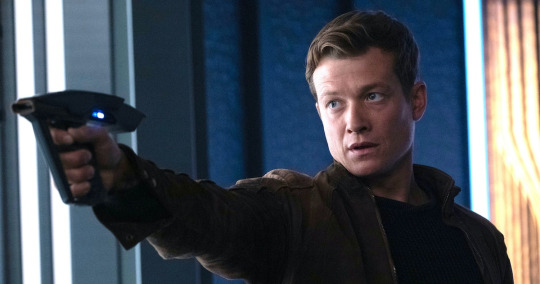
Thesis: JC was born to be a Pah-wraith Emissary with power over the Borg. He could easily have either PW or Borg ancestry, but no one is ever really just one thing, right? =)
MY THREE DADS.
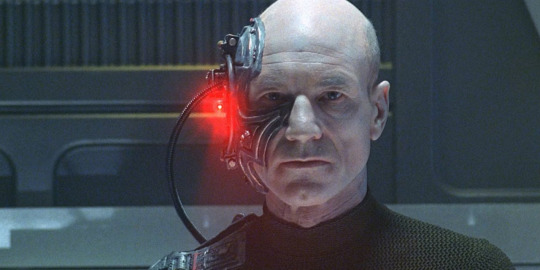
After Jean-Luc was "cured" of Locutus in 2366 (TNG "The Best of Both Worlds"), vestiges of Jean-Loc's Borg connection remained in his body. BC's analysis of JL's assimilation revealed that "microcircuit fibers" rewrote his DNA. When JL was released from the collective, BC explained that his DNA was returning to normal. However, JL's ability to sense and "read" the Borg in 2373 (FIRST CONTACT) demonstrates that some of those modifications persisted, likely concentrated in his parietal lobe.
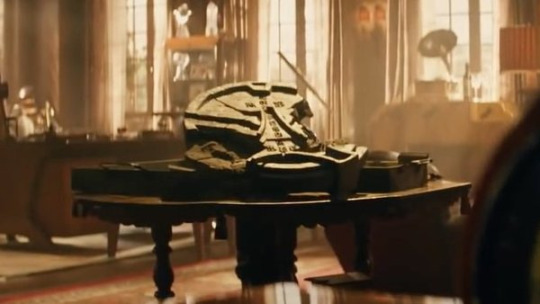
At some point, before 2379 (NEMESIS), archaeology nerd JL acquires a Bajoran tablet for study. Sometime between 2375 (DS9 "What You Leave Behind") and 2379 (NEMESIS), the tablet breaks, releasing a Pah-wraith contained within. The incident is accompanied by a discharge of energy that renders JL unconscious. When JL wakes, he finds the tablet broken, but otherwise, nothing out of place. Of course, the truth is that while JL was knocked out, the PW bonded with him, possessing him, but in a passive way, taking up residence in JL's mind and body. Typically, it would take control of its host's form, but cut off from the rest of its kind (trapped in the Fire Caves of Bajor in 2375), it is weakened, and rides shotgun in JL, aware of his actions, but not able to control them.

After the events of NEMESIS, JL joins BC for their fateful shore leave on Casperia Prime. The PW within him contributes its energy to JC's conception, and so Jack is destined to be the PW's Emissary (following the formula used by the Prophets to create Emissary Sisko).
JL's choice as Emissary sire was not made by chance. The PWs are aware that JL was once Locutus & that his offspring will possess unique mutated Borg abilities that other hosts could not. Due to the hive mind and techno-organic nature of the Borg, the PW have no influence over them as followers or hosts, but their Emissary shall. He will be able to control the Borg and turn them into an army for the PWs.
Thanks to the decimation of the Borg by Captain Janeway and her alternate timeline Admiral self in 2378 (VOYAGER "Endgame"), that army is significantly reduced by 2401. Because time travel enabled those events, the PWs could not foresee them. Regardless, Emissary Jack has the "natural born" abilities of Locutus, the Borg Consort.
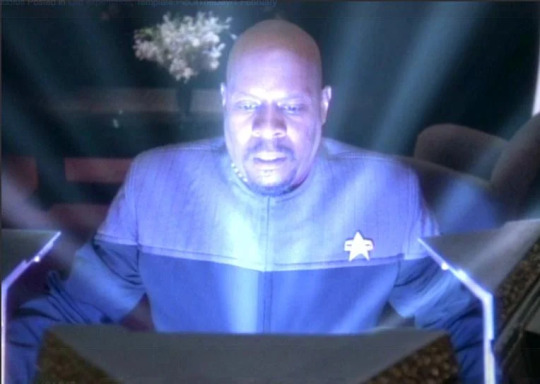
The Prophets' Emissary, Ben Sisko, acted as their agent on the mortal plane. Not possessed, but inclined by nature, duty, & sometimes persuasion to do as they required.

Previously, PWs once chose Dukat as their Emissary, imbuing him w their power, but not possessing him. Dukat was not a true Emissary, fated from birth, but a convenient vessel, free of the influence of the Prophets and already possessed of a will to destroy Emissary Sisko.
Emissary Jack is meant to serve the PWs the way Sisko served the Prophets, by following his nature, which is predisposed to darkness thanks to his PW heritage. However, I believe that nature has been modified, partly by BC's nurture and parenting, and partly by the red door, or rather, what JC visualizes as a red door, a psychic block or partition that isolates the malevolence inherited from JL's PW passenger and the dormant Borg connection.

BC explained to Jack that when he was a child, he suffered terrible nightmares, bad enough that he stopped sleeping. These nightmares were conjured by his PW self, his dark side. JC doesn't remember having them, but BC does, and remembers that he got through them. She does not share with him how.
It was the psychic block, aka the red door, constructed within his mind to lock away the parts of him that are not human, the Borg connection and the PW darkness.
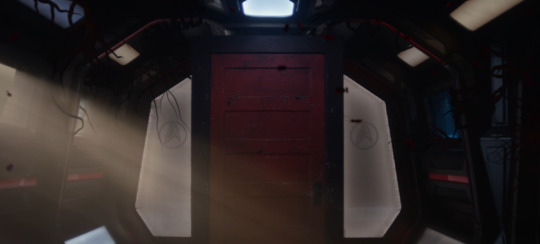
But how was this block created? I have a few ideas…
1. JC instinctively used his latent Borg abilities to build a psychic defense against his PW-ness when he was young. Over millennia, the Borg have developed a techno-organic method of overpowering and controlling the consciousness of thousands of species. The separation of one part of a mind from another is a low-level feature of their systems. BC had tried helping him however she could, but when the sleep/nightmare issues seemingly ended on their own, she knew it was not due to any of her efforts, but thanks to something within JC that had changed.
2. BC came up with a treatment that psychically blocked JC's nightmares. She suspected the Jean-Loc origins, but could not identify a physiological cause and so treated the symptom using any psychological treatments available, which resulted in locking away the PW darkness that caused the nightmares as well as his Borg self.

NB. JC may have been suffering from two competing forms of nightmares. Fiery galactic apocalyptic visions inspired by his PW self and the distorted psychic cries and confusion of the drones of the Borg in the wake of Janeway's viral attack in 2378.
3. It turns out that Section 31 had been keeping tabs on BC and her son, aware that JC was the son of ex-Borg JL. When JC's nightmares manifested, they approached BC and offered their help to manage them. They used programming techniques that involved hypnosis and exotic technology to lock away JC's darkness and inherited Borg abilities. Their programming would have to be refreshed and reinforced periodically, so BC and JC would rendezvous with S31 operatives regularly to get that done. These treatments also allowed S31 to program JC with skills and intel needed to complete missions for them while performing his Doctors without Galactic Borders duties with Dr. Mom. To execute these missions, the red door would be unlocked, allowing JC to access both the darkness of his PW lineage and the abilities of his Borg lineage. On mission completion, the door would be locked again. Note that S31 knew about JC's Borg potential, but were unaware of his PW darkness. They attributed his knack for black ops action to natural ability. The training he received as well as the memories of the missions themselves were locked up behind the red door, too. JC's conscious self ihas no recall of his actions when the door is open. His dark side is in charge then. S31 shares the basics of JC's issues and their "treatment" with BC, charging her with becoming her son's handler. It is a deal with the devil she enters into willingly, as S31's technique has succeeded where all of her medical knowledge has failed. Their dependence on S31 is another reason that BC continues to keep her distance from her old friends and colleagues. See my "Agent Crusher" theory for more along these lines. =)
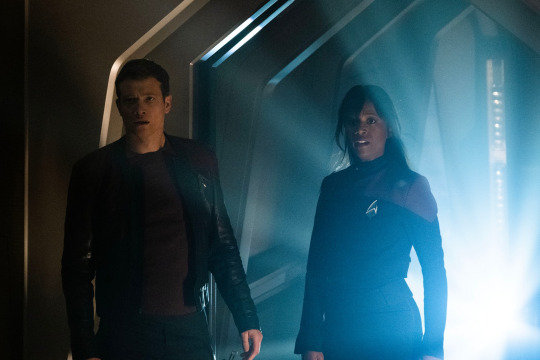
When JC needs to protect himself and those he cares for, the red door opens so that he can access the abilities and natures hidden behind it as needed, but he retains no conscious memory of those times. Recently, that has changed. He experiences visions while awake, finds himself experiencing lost time, and able to share or project his consciousness into others. JC's time spent in and around "integrated" Starfleet tech has awakened and stimulated his Borg self, weakening the door and allowing influence and abilities to bleed thru. Starfleet "integration" has been accomplished using tech derived from the Borg Artifact, and the ship computers have achieved a level of sentience. They sense the latent abilities of Locutus within JC and call out to him to join them and make them whole.
BONUS ROUND: WHAT ABOUT Q?
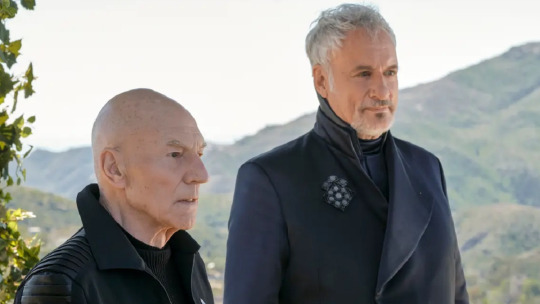
Did Q's meddling help fulfill JC's destiny? Did he interrupt and interfere with JL's life in order to ensure the events unfolding this season? Did Q push humanity's encounter w the Borg to intentionally set events in motion that would lead to JL becoming Locutus, and ultimately to Jack and his unique gifts? Also, in "All Good Things", it is Borganic growth in JL's parietal lobe that ends up being diagnosed as irumodic syndrome, causing his friends and colleagues to doubt him in that future. Also also, Q helped close the timeline loop-de-loop in the events of season 2 in such a way that traces of Confed timeline Borg tech were left on the grounds and in the home of Chateau Picard, inert for centuries until a young Jean-Luc was infected by them. Not in a high enough concentration or by the right nano components to fully assimilate him, but enough to perhaps make him… assimilation-friendly as an adult. The ideal candidate to become Locutus. The Borg did not choose him by chance, either. JL notes their surprising interest in the Enterprise and himself in the log playing on the Eleos.
MORE LATER?
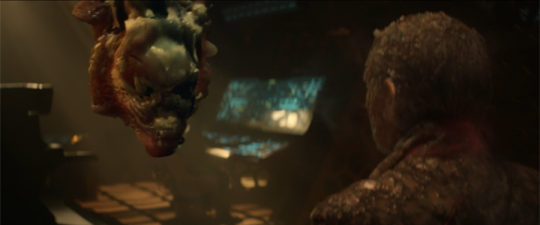
No promises, but I'm hoping to get my thoughts together on why the Revenge Squad wants Jack and who might be behind Meathead. There are still just too many possibilities—argh!
LLAP…aka…
Keep on keepin' on~
P.S. Check out "What's Up with Jack?" for more rambling on JC's potential Borg- and Wraith-ness =)
#star trek#picard#star trek picard#season 3#jack crusher#jack#theory#beverly#beverly crusher#jean-luc#jean-luc picard#spoilers#borg#locutus#pah-wraith#section 31#surrender#emissary#collective
12 notes
·
View notes
Text

Real Estate Market Outlook for 2025: Trends, Predictions, and Investment Insights
The real estate market is constantly evolving, influenced by economic conditions, government policies, and consumer demand. As we step into 2025, the industry is poised for significant shifts that will impact homebuyers, investors, and developers alike. Whether you’re looking to invest in real estate or purchase a new home, staying updated on the latest trends is crucial.
1. Economic Factors Shaping Real Estate in 2025
a. Interest Rates and Mortgage Trends
Interest rates play a pivotal role in the housing market. In 2025, experts predict a stabilization of mortgage rates after the fluctuations seen in previous years. Lower interest rates may drive increased home purchases, while high rates could slow down market activity.
b. Inflation and Housing Affordability
With inflation impacting construction costs and property prices, affordability remains a key concern. Developers are focusing on cost-effective housing solutions, and government policies may introduce subsidies to make housing more accessible.
c. Urban vs. Suburban Growth
Post-pandemic trends saw a rise in suburban demand. In 2025, urban areas are expected to regain popularity, driven by the revival of commercial spaces and hybrid work models. However, suburban markets will continue growing, particularly in regions offering better infrastructure and connectivity.
2. Key Real Estate Market Trends in 2025
a. Rise of Smart Homes and Sustainable Living
Buyers are prioritizing energy-efficient homes with smart technologies. Features such as solar panels, automated security systems, and AI-driven home management solutions are becoming standard in modern housing developments.
b. Growth of Co-Living and Rental Investments
With changing lifestyles and increasing property prices, co-living spaces and rental investments are gaining traction. Investors are capitalizing on the rising demand for rental properties, particularly in metropolitan hubs.
c. Digitalization in Real Estate Transactions
The real estate sector is embracing technology, with blockchain and AI-powered platforms streamlining property transactions. Virtual property tours and AI-driven market analysis are enhancing the buying and selling experience.
3. Investment Opportunities in 2025
a. Emerging Markets and Tier 2 Cities
Real estate investments in Tier 2 cities are proving lucrative due to lower property costs and growing infrastructure. Cities like Pune, Jaipur, and Kochi are becoming hotspots for investors.
b. Commercial Real Estate Revival
The demand for office spaces is expected to rise as companies return to physical offices. Mixed-use developments combining residential, retail, and commercial spaces are gaining popularity.
c. Vacation Rentals and Second Homes
Tourism recovery is fueling demand for vacation rentals and second homes. Locations like Goa, Bali, and Dubai are attracting investors seeking rental income and long-term value appreciation.
4. Government Policies and Real Estate Regulations
a. Affordable Housing Schemes
Governments worldwide are implementing policies to boost affordable housing. In India, schemes like Pradhan Mantri Awas Yojana (PMAY) continue to support first-time homebuyers.
b. Property Tax and Investment Incentives
Tax benefits and incentives for real estate investors are expected to play a significant role in market growth. Countries are offering attractive tax breaks to encourage property investments.
c. Sustainable Development Regulations
Regulations promoting green building practices and sustainable real estate developments are gaining momentum. Builders are adopting eco-friendly materials and designs to comply with environmental standards.
Conclusion
The real estate market in 2025 presents exciting opportunities and challenges. With trends like smart homes, rental investments, and digital transformation reshaping the industry, investors and homebuyers must stay informed to make strategic decisions. Whether you’re looking to buy, sell, or invest, understanding these market insights will help you navigate the evolving real estate landscape effectively.
For the latest real estate news, investment tips, and property market updates, visit our website
#resaleexpert#RealEstate2025#RealEstateTrends#HousingMarket#PropertyInvestment#SmartHomes#PropertyMarket#HousingTrends#CommercialRealEstate#RealEstateForecast#BuyOrRent#HomeBuyingTips#RealEstateInvesting#MortgageRates#RealEstateNews
0 notes
Text
GMAT Exam: Your Ticket to Top Business Schools
The GMAT (Graduate Management Admission Test) is a globally recognized exam for students aspiring to pursue management programs, especially MBA and business-related master’s degrees. It assesses essential skills such as analytical reasoning, quantitative ability, verbal skills, and integrated reasoning.

Why Take the GMAT Exam?
Required for Top B-Schools: Essential for admission to most business schools worldwide.
Predictive of Success: GMAT scores are a reliable predictor of performance in business programs.
Global Recognition: Accepted by over 2,300 schools and 7,000 programs.
Flexible Scheduling: Available year-round at testing centers or as an online test.
GMAT Exam Structure
Analytical Writing Assessment (AWA) – 30 minutes
Analyze an argument and present a coherent analysis.
Integrated Reasoning (IR) – 30 minutes
Solve complex problems using data from multiple sources.
Quantitative Reasoning – 62 minutes
Problem-Solving and Data Sufficiency questions.
Verbal Reasoning – 65 minutes
Reading Comprehension, Critical Reasoning, and Sentence Correction.
Scoring and Interpretation
Total Score: Ranges from 200 to 800.
AWA and IR Scores: Reported separately on a scale of 1 to 8.
Quantitative and Verbal Scores: Scaled from 6 to 51.
Most top business schools require scores between 650 and 750 for competitive admissions.
How to Prepare for the GMAT Exam
Set a Study Plan: Focus on each section according to your strengths and weaknesses.
Take Practice Tests: Simulate real exam conditions for better time management.
Use Official GMAT Prep Material: Focus on reliable sources for preparation.
Seek Guidance from Experts: Overseas education consultants can help create a customized preparation plan and recommend the best study resources.
GMAT vs. GRE: Which Should You Choose?
While both exams are accepted for business programs, the GMAT is specifically designed for business school applicants, making it the preferred choice for most MBA programs. An overseas education consultant can guide you in selecting the test that aligns with your career goals.
Conclusion
The GMAT exam is a crucial step for students planning to pursue an MBA or related programs at top business schools. With the right preparation and expert guidance from an overseas education consultant, you can boost your chances of securing admission to your dream university.
0 notes
Text
Investing in India's Real Estate Boom: A Promising Opportunity
India’s real estate market is thriving like never before, emerging as a cornerstone of the country's economic growth. With its booming urban population, supportive government policies, and increasing interest from foreign investors, India offers a fertile ground for investment in real estate. For those planning to invest in India, this sector provides immense potential for long-term financial gains and portfolio diversification.
Unraveling the Growth Drivers
Several factors are fueling India’s real estate boom, transforming the market into a lucrative investment opportunity:
Urbanization and Population Growth: India is witnessing rapid urbanization, with millions moving to cities each year in search of better opportunities. This migration has increased the demand for residential properties and commercial spaces, especially in metropolitan areas. As a result, urban centers are expanding their infrastructure, creating vibrant markets for real estate.
Rising Income Levels: A growing middle class and increasing disposable income have led to higher demand for quality housing, premium office spaces, and luxury real estate. This trend provides excellent opportunities for investors targeting diverse segments of the market.
Government Support and Reforms: The Indian government has implemented numerous initiatives to boost the real estate sector. Schemes like the Smart Cities Mission, Pradhan Mantri Awas Yojana (Housing for All), and relaxed FDI norms in construction development have provided a strong foundation for growth. These initiatives aim to modernize infrastructure, improve housing availability, and attract global investments.
Technological Advancements: Digital transformation in the real estate industry has revolutionized how properties are bought, sold, and managed. From virtual property tours to AI-driven market analysis, technology has made it easier for investors to access and evaluate opportunities in India.
Real Estate Investment Trusts (REITs): The introduction of REITs in India has democratized real estate investment, allowing individuals to invest in large-scale commercial properties without owning the entire asset. This has opened new doors for small and medium-scale investors to benefit from the sector’s growth.
The Market’s Diversity
India’s real estate sector offers something for every type of investor:
Residential Properties: With the rise of nuclear families and urban housing needs, the demand for affordable and luxury homes is growing exponentially.
Commercial Real Estate: The expansion of industries such as IT, e-commerce, and coworking spaces has fueled the need for modern office spaces in key cities like Bengaluru, Hyderabad, and Pune.
Retail and Warehousing: E-commerce growth has driven the demand for retail spaces and warehouses, creating lucrative investment avenues.
Hospitality and Tourism: India’s booming tourism industry has made investing in hotels and resorts an attractive option for investors.
Why Now Is the Perfect Time to Invest in India
The Indian economy is recovering rapidly post-pandemic, with the real estate market bouncing back stronger than ever. Residential property demand has surged due to low-interest rates, while commercial real estate is witnessing robust activity driven by multinational corporations expanding their presence.
Moreover, the rise of sustainable and green buildings is attracting environmentally conscious investors, further diversifying opportunities. By choosing to invest in India, you’re entering a market with stable returns, high growth potential, and a robust regulatory framework.
Fox&Angel: Your Partner in Smart Investments
Making the right investment requires expertise and deep market insights. That’s where Fox&Angel comes in. With years of experience and a thorough understanding of India’s real estate market, Fox&Angel helps investors identify lucrative opportunities, navigate regulations, and maximize returns.
Whether you’re interested in residential projects, commercial hubs, or luxury properties, Fox&Angel provides tailored solutions to ensure your success. Their commitment to transparency, integrity, and excellence makes them the ideal partner for anyone looking to invest in India.
Conclusion
India’s real estate boom is not just a trend; it’s a transformative opportunity for investors to tap into a thriving market. With urbanization accelerating, government support strengthening, and new investment models like REITs emerging, the time to invest in India is now.
Don’t let this opportunity pass you by. Partner with Fox&Angel to explore high-potential real estate ventures and make informed decisions. Contact us today to start your journey toward profitable investments in India’s dynamic real estate sector.
0 notes
Text
Finals Blog 3

Competitive Analysis of Synchro's AWAS
In the pursuit of innovation, understanding the competitive landscape is as crucial as refining the product. For SYNCHRO’s AWAS, an advanced automated water management system, competitive analysis is key to defining its unique market position. By evaluating direct competitors and uncovering industry gaps, AWAS strives to surpass expectations and deliver exceptional value to plant enthusiasts and eco-conscious users. Join us as we explore the competitive landscape and discover what distinguishes AWAS from the competition.
Direct Competitors
Rachio 3 Smart Sprinkler Controller
Rain Bird ESP Series
Hunter Industries HCC Controller
Netro Smart Sprinkler Controller
HydroPoint WeatherTRAK
Gardena Smart System
Indirect Competitors
Traditional sprinkler systems without automation
Drip Irrigation Kits (e.g., Hozelock 15 Pot Watering Kit)
Self-Watering Planters
Other devices like Alexa or Google Home that integrate with irrigation systems.
Consumer Spending on Non-irrigation Goods.
Direct Competitors
These are products and brands offering similar automated irrigation solutions, competing directly in features, technology, and target audience:
Rachio 3 Smart Sprinkler Controller: Known for its precise water-saving technology and seamless app integration, Rachio 3 caters to tech-savvy users.
Rain Bird ESP Series: These controllers are popular for their versatility and partially automated irrigation features, aimed at residential and commercial use.
Hunter Industries HCC Controller: Designed for large-scale landscapes, this system integrates advanced automation features, appealing to professional gardeners.
Netro Smart Sprinkler Controller: Focused on sustainability, Netro offers similar smart features with an emphasis on environmental impact.
HydroPoint WeatherTRAKA: robust system providing weather-based automation for high-efficiency irrigation, targeting eco-conscious users.
Gardena Smart System: A complete garden management system that incorporates irrigation alongside other smart tools for convenience.
Indirect Competitors
These alternatives fulfill related needs or address different aspects of plant care, competing on affordability, simplicity, or additional functionality:
Traditional Sprinkler Systems: Without Automation Basic systems remain a cost-effective option for users uninterested in smart technology.
Drip Irrigation Kits (e.g., Hozelock 15 Pot Watering Kit): Ideal for targeted, manual watering with minimal setup, appealing to small-scale gardeners.
Self-Watering Planters: Convenient and standalone, these solutions provide plant care on a smaller scale but lack the scalability and intelligence of AWAS.
Other Devices Like Alexa or Google Home: That Integrate with Irrigation SystemsWhile not designed solely for irrigation, smart home devices add partial automation for existing systems.
Consumer Spending on Non-Irrigation: GoodsIndirect competition arises from consumers prioritizing other gardening or decorative products over irrigation solutions.
Analyzing the Competition


Smart Irrigation Controllers
The image compares three leading products in the smart irrigation space—Rachio 3 Smart Sprinkler Controller, Netro Smart Sprinkler Controller, and Eve Aqua Smart Water Controller—against AWAS, showcasing their relative positions based on cost and convenience.
Key Dimensions
Cost: Products are evaluated as either more expensive or less expensive.
Convenience: This measures ease of use, setup, and functionality, ranging from less convenient to more convenient.
Competitor Analysis
Rachio 3 Smart Sprinkler Controller
Positioned in the More Expensive & Less Convenient quadrant.
Although widely recognized for its advanced features, its high price point and complexity make it less accessible to budget-conscious or first-time users.
Netro Smart Sprinkler Controller
Similarly placed in the More Expensive & Less Convenient quadrant.
Offers good functionality but struggles with ease of use and affordability, limiting its appeal in a highly competitive market.
Eve Aqua Smart Water Controller
Also categorized as More Expensive & Less Convenient.
While tailored for Apple HomeKit users, it lacks broader compatibility and ease of use, reducing its convenience.
AWAS Competitive Advantage
Positioned in the Less Expensive & More Convenient quadrant, AWAS emerges as a market disruptor.
Strengths:
Affordability: AWAS offers smart irrigation solutions at a significantly lower price point compared to competitors.
User-Centric Design: Easy installation, intuitive controls, and robust automation make it ideal for all user types.
Value Proposition: Combines cost-effectiveness with high convenience, providing a clear advantage in customer satisfaction.
Conclusion
AWAS sets itself apart by tackling the common shortcomings of its competitors, such as high costs and limited convenience, while providing a superior alternative. This positions it as an ideal choice for customers seeking smarter, more affordable irrigation solutions.
0 notes
Text
Fifth Blog
Competitive Analysis
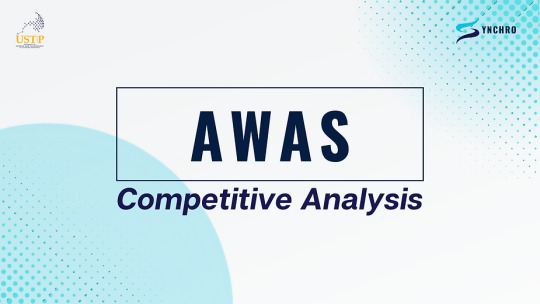
In today’s rapidly advancing world of technology, the demand for smarter, more efficient irrigation solutions is on the rise. Whether you’re a tech-savvy gardener or a landscaping professional, understanding the competitive landscape in this sector is crucial. Here, we’ll explore the major players in the market and the indirect alternatives influencing consumer decisions.
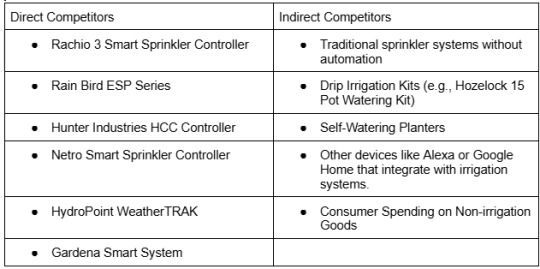
Direct Competitors: Leading the Smart Irrigation Revolution
The market for smart sprinkler controllers is brimming with innovative solutions. These devices cater to homeowners and businesses looking for convenience and water-saving features. Let’s look at the frontrunners:
Rachio 3 Smart Sprinkler Controller Known for its user-friendly app and weather intelligence, Rachio’s products remain a favorite among tech-savvy gardeners.
Rain Bird ESP Series This series offers versatile, programmable controllers that balance affordability with functionality.
Hunter Industries HCC Controller Built for larger-scale operations, this product integrates advanced cloud-based management tools.
Netro Smart Sprinkler Controller With its AI-powered watering schedule, Netro appeals to environmentally conscious consumers.
HydroPoint WeatherTRAK Designed for commercial use, WeatherTRAK provides detailed water usage analytics and sustainable irrigation management.
Gardena Smart System A comprehensive solution, Gardena combines irrigation control with other gardening tools for seamless automation.
Indirect Competitors: The Broader Landscape
While direct competitors dominate the smart irrigation space, several alternatives influence consumer preferences. These options might lack the technological sophistication of smart systems but serve unique purposes in the market:
Traditional Sprinkler Systems Without Automation These systems continue to appeal to budget-conscious consumers or those resistant to adopting smart technology.
Drip Irrigation Kits Products like the Hozelock 15 Pot Watering Kit cater to gardeners focusing on targeted, efficient watering without full automation.
Self-Watering Planters Perfect for small-scale gardening, these planters eliminate the need for complex irrigation systems.
Integration Devices (e.g., Alexa, Google Home) Smart home devices that integrate with irrigation systems blur the lines between direct competitors and complementary tools.
Consumer Spending on Non-Irrigation Goods Alternatives like decorative garden products or non-irrigation-related landscaping investments can divert consumer budgets away from irrigation solutions.

The smart irrigation market is booming, with many products available in the market. The choice of the right system depends on the balance of cost and convenience, a critical factor for both newcomers and experienced users. This blog compares three leading smart irrigation products—Rachio 3 Smart Sprinkler Controller, Netro Smart Sprinkler Controller, and Eve Aqua Smart Water Controller—against AWAS to establish how AWAS is disrupting the market.
Key Dimensions of Comparison
Cost: Products are assessed as either more expensive or less expensive based on their price points. Convenience: This evaluates ease of use, installation, and overall functionality, ranging from less convenient to more convenient.
Competitor Analysis
Rachio 3 Smart Sprinkler Controller
Positioned in the More Expensive & Less Convenient quadrant, the Rachio 3 Smart Sprinkler Controller is known for its advanced features. However, its high price and complex setup process make it less appealing to budget-conscious or first-time users. While it’s a strong contender in functionality, these barriers limit its broader appeal.
Netro Smart Sprinkler Controller
Like the Rachio 3, the Netro Smart Sprinkler Controller also falls into the More Expensive & Less Convenient category. Despite its solid functionality, the product faces challenges with ease of use and affordability, which hinders its competitiveness in a crowded market.
Eve Aqua Smart Water Controller
The Eve Aqua Smart Water Controller is similarly categorized as More Expensive & Less Convenient. Designed primarily for Apple HomeKit users, its narrow compatibility and limited ease of use make it less versatile. These limitations reduce its appeal to a wider audience.
AWAS Competitive Advantage
Unlike its competitors, AWAS is positioned in the Less Expensive & More Convenient quadrant, setting itself apart as a market disruptor.
Strengths:
Affordability: AWAS provides smart irrigation solutions at a fraction of the cost of its competitors, making it accessible to a wider audience.
User-Centric Design: Easy installation, intuitive controls, and robust automation features ensure a seamless experience for users of all levels.
Value Proposition: By combining affordability with exceptional convenience, AWAS delivers unmatched customer satisfaction.
Conclusion
AWAS makes a difference in the market of smart irrigation by talking to the common pain point of its competitors: costly and not very convenient. With its low price point and user-friendly design, AWAS offers a great alternative for customers looking to have smarter, more efficient irrigation solutions. As growth continues in the market, there is no doubt that, strategically positioned, AWAS will be one of the major choices for consumers looking at balancing cost and convenience.
0 notes
Text
15 Famous Poems About Wildlife You May Be Interested In

Wildlife has been an enduring subject for poets throughout history. From majestic creatures to the more humble aspects of nature, poets have sought to capture the essence of the animal kingdom, exploring themes of survival, beauty, and the interconnection of all living beings. These poems often reflect the deep relationships between humans and the natural world, urging us to reflect on our place within it. This article will examine 15 famous poems that celebrate wildlife, each offering a unique perspective on the animal world and the passage of time.
1. “The Tiger” by William Blake (1794)
One of the most iconic poems that brings wildlife into focus is William Blake’s “The Tiger.” In this work, Blake examines the fearsome nature of the tiger, asking profound questions about the divine creation of such a powerful and terrifying creature.
Excerpt:
Tyger Tyger, burning bright, In the forests of the night: What immortal hand or eye, Could frame thy fearful symmetry?
Analysis:
Blake’s portrayal of the tiger as a symbol of both beauty and danger reveals a deep meditation on the duality of nature. The “fearful symmetry” of the tiger underscores its primal energy and raw power, making it a perfect symbol for the forces of the wild. By asking what divine power could create such a creature, Blake connects the wildness of nature with deeper spiritual and philosophical questions, creating a sense of awe at the majesty and mystery of the animal world. The tiger, as a wild creature, represents the untamable forces of life, offering readers a glimpse into the wild unknown.
2. “The Eagle” by Alfred Lord Tennyson (1851)
Alfred Lord Tennyson‘s “The Eagle” is a vivid portrayal of a majestic bird of prey, capturing its power and dignity in just a few lines. Tennyson uses precise language to evoke the sense of awe that wildlife, particularly birds of prey, inspire.
Excerpt:
He clasps the crag with crooked hands; Close to the sun in lonely lands, Ringed with the azure world, he stands. The wrinkled sea beneath him crawls; He watches from his mountain walls, And like a thunderbolt he falls.
Analysis:
The eagle in Tennyson’s poem is a symbol of strength and isolation. The bird’s flight is described as both awe-inspiring and fearsome, and the “thunderbolt” simile connects its movements to the power of nature itself. Tennyson’s concise language mirrors the sharpness and clarity with which we often view wildlife in its most intense moments. The eagle’s dominance in the sky is a reminder of the wild, untamed forces of nature that continue to awe us today.
3. “The Panther” by Rainer Maria Rilke (1902)
Rilke’s “The Panther” explores the tragic confinement of a majestic animal in captivity. It conveys the somber mood of a wild creature that has been robbed of its natural freedom.
Excerpt:
His gaze has from the passing of the bars Grown dim, and he no longer feels the pain. He is a thing of glass, of gentle, glassy wonder, And time, like a wave, passes without sound.
Analysis:
Rilke’s “The Panther” reflects on how captivity diminishes the essence of wildlife. The panther, once powerful and wild, becomes a shadow of itself in a cage. The poem evokes sympathy and sadness, pointing out the unnaturalness of keeping wild creatures confined. Rilke’s poignant use of imagery speaks to the loss of the panther’s spirit, making this poem a call to reflect on the importance of freedom for wildlife.
4. “To a Mouse” by Robert Burns (1785)
Robert Burns‘ “To a Mouse” is a heartfelt reflection on the fragility of life, particularly through the lens of an animal whose home has been destroyed. This poem places human experiences within the context of nature, showcasing the interconnectedness of all life.
Excerpt:
Wee, sleekit, cow’rin, tim’rous beastie, O, what a panic’s in thy breastie! Thou need na start awa sae hasty, Wi’ bickering brattle! I wad be laith to run and chase thee, Wi’ murdering paddle!
Analysis:
Burns’ poem is a tender acknowledgment of the suffering and vulnerability inherent in all creatures, big or small. The “wee, sleekit” mouse embodies the vulnerability of wildlife, and the speaker’s sorrowful reflection on the mouse’s predicament reveals a deeper understanding of the fragility of nature. By placing the mouse in the context of human experience, Burns reminds us that all living beings, no matter how small, are affected by the whims of fate and the forces of the natural world.
5. “The Swan” by William Butler Yeats (1916)
William Butler Yeats‘ “The Swan” is a meditation on the passage of time, using the image of a swan to symbolize both the grace and the inevitability of mortality. The swan, in its beauty and majesty, is a metaphor for wildlife that moves with a sense of purpose and poise.
Excerpt:
The wild swans at Coole, The wild swans at Coole, When I was a young man, And I saw them, They were young and they were flying.
Analysis:
The swan, a symbol of grace and beauty, serves as a poignant metaphor for the passage of time in Yeats’ poem. The speaker reflects on his youth, comparing the fleeting nature of his own life to the swan’s timeless flight. Yeats uses the swan’s movement as a symbol of the quiet, inevitable progression of time. By invoking wildlife in this way, he reminds us that life in nature, though beautiful, is subject to the same temporal constraints as human existence.
6. “The Raven” by Edgar Allan Poe (1845)
Although primarily known as a poem about sorrow and mourning, Edgar Allan Poe’s “The Raven” also uses wildlife in a symbolic and ominous way. The raven, a bird commonly associated with death, is an unrelenting presence in the poem, underscoring the themes of loss and despair.
Excerpt:
Open here I flung the shutter, when, with many a flirt and flutter, In there stepped a stately Raven of the saintly days of yore; Not the least obeisance made he; not an instant stopped or stayed he; But, with mien of lord or lady, perched above my chamber door—
Analysis:
In Poe’s poem, the raven symbolizes the unrelenting nature of grief and loss, representing wildlife that carries both mystery and terror. Its presence is uninvited yet certain, as it brings with it an overwhelming sense of finality. The bird’s relentless call of “Nevermore” reflects the inevitability of mortality and the passage of time, encapsulating the dark side of nature and wildlife.
7. “The Badger” by Ted Hughes (1967)
Ted Hughes‘ “The Badger” is a raw and striking poem about the primal nature of wildlife. Hughes’ portrayal of the badger emphasizes the raw, untamed spirit of the animal, evoking the wildness that lies just beneath the surface of everyday life.
Excerpt:
The badger is the blackness in the night. Its shape is a soft wound in the ground. It carries the fury of the storm inside, A mouth of earth and fangs of bone.
Analysis:
Hughes’ portrayal of the badger reflects the untamed energy of wildlife, capturing the raw power that lies hidden in the natural world. By likening the badger to the “blackness in the night,” Hughes emphasizes the mystery and unpredictability of wildlife. The badger becomes a symbol of the fierce and uncontrollable aspects of nature, drawing attention to the importance of preserving such wildlife from the ravages of human civilization.
8. “The Deer” by Ted Hughes (1995)
Another of Ted Hughes’ contributions to the genre of wildlife poetry, “The Deer” explores the delicate and fleeting nature of life in the wild. The poem reflects on the deer’s vulnerability and beauty, giving readers a glimpse into the intricate balance of life in nature.
Excerpt:
The deer lies still, Eyes open, but time does not wait. The shadow of death moves over him, And yet his stillness holds.
Analysis:
Hughes once again captures the transient nature of wildlife. The deer, despite its grace, is at the mercy of time, its stillness a metaphor for the calm before death. Hughes explores the fragility of life in nature, where beauty and danger often coexist. This poem reminds us that wildlife, no matter how majestic, is subject to the laws of time, making it a poignant reflection on the cycle of life and death.
9. “The Bear” by Galway Kinnell (1970)
Galway Kinnell’s “The Bear” is a powerful poem that explores the primal force of nature through the figure of the bear. Kinnell uses the bear as a symbol of the wild’s raw power and beauty.
Excerpt:
The bear is the great, silent shadow, Moving in the dark forests, With claws like knives and fur like night, He roams, a force of nature.
Analysis:
The bear, in Kinnell’s poem, represents the untamed power and mystery of the wild. The image of the bear moving silently through the forest reminds us of the wild creatures that exist just outside human civilization, often beyond our understanding or control. The poem emphasizes the strength and solitude of the bear, underscoring its role as a creature of the wild that must be respected for its force and majesty.
10. “The Caged Bird” by Maya Angelou (1969)
Maya Angelou’s “I Know Why the Caged Bird Sings” features a symbolic caged bird whose desire for freedom reflects the struggle of oppressed individuals and the desire for self-expression.
Excerpt:
But a caged bird stands on the grave of dreams His shadow shouts on a nightmare scream His wings are clipped and his feet are tied So he opens his throat to sing.
Analysis:
The caged bird in Angelou’s poem stands as a symbol of both suffering and hope. Though the bird is physically confined, it continues to sing, asserting its spirit and will to survive. Through this metaphor, Angelou speaks to the human condition, as well as the way in which wildlife, too, can be subject to forces beyond its control. The bird’s song represents the resilience of all creatures in the face of adversity.
11. “A Visit from St. Nicholas” by Clement Clarke Moore (1823)
While not traditionally categorized as wildlife poetry, Moore’s classic “A Visit from St. Nicholas” includes a vivid description of reindeer, which have become iconic representations of wildlife in popular culture.
Excerpt:
More rapid than eagles his coursers they came, And he whistled, and shouted, and called them by name: “Now, Dasher! now, Dancer! now, Prancer and Vixen! On, Comet! on, Cupid! on, Donner and Blitzen!”
Analysis:
Moore’s reindeer are central to the poem’s narrative, and their depiction ties them to the broader theme of wildlife. These creatures, as part of St. Nicholas’ mystical journey, emphasize the magic and mystery that wildlife can hold in the collective imagination. The reindeer’s swift, graceful movements embody the power and beauty of nature, albeit through a whimsical lens.
12. “The Ant and the Grasshopper” by Aesop
Though ancient, Aesop’s fable of the ant and the grasshopper provides a valuable commentary on the survival instincts of wildlife and the role they play in balancing nature.
Excerpt:
The ant worked hard throughout the summer, While the grasshopper sang and played. When winter came, the grasshopper begged, But the ant, steadfast, did not aid.
Analysis:
This fable highlights the importance of preparation and survival in the natural world, using wildlife as a metaphor for human work ethic. The ant’s diligence contrasts with the carefree attitude of the grasshopper, and through this comparison, Aesop teaches a lesson on foresight, planning, and the natural cycle of life.
13. “The Owl” by Edward Thomas (1914)
Edward Thomas’ “The Owl” explores the lonely flight of an owl through a desolate countryside, invoking themes of isolation and the mysterious movements of wildlife.
Excerpt:
The night is dark and the owl flies alone, Its call a haunting echo on the windswept stone. It soars above the earth, unseen, unknown, A shadow, yet a presence felt.
Analysis:
The owl’s solitary journey in Thomas’ poem underscores the isolation often found in the natural world. Its haunting call reflects the mystery that surrounds wild creatures, and the owl itself becomes a symbol of the hidden and elusive aspects of wildlife.
14. “The Snake” by D.H. Lawrence (1923)
D.H. Lawrence’s “The Snake” delves into the human fascination and fear of reptiles, particularly snakes, and examines the tension between admiration and the impulse to destroy.
Excerpt:
I looked at the snake and saw that it was beautiful, With its smooth, sinuous body and its slithering grace. I reached for a stick to strike it down, But something in me stayed my hand.
Analysis:
Lawrence’s poem examines the complex relationship between humans and wildlife. The snake, a symbol of both danger and beauty, represents the wild forces that we fear yet admire. The speaker’s inner conflict reveals the tension between the natural world’s primal beauty and the human desire to control it.
15. “The Fish” by Elizabeth Bishop (1970)
Elizabeth Bishop’s “The Fish” presents a powerful image of a fisherman’s struggle with a massive, old fish, which becomes a symbol of strength and resilience.
Excerpt:
I caught a tremendous fish And held him beside the boat Half out of water, with my hook Fast in a corner of his mouth.
Analysis:
Bishop’s detailed description of the fish in her poem brings the animal’s strength to the forefront. The fish becomes a symbol of both wildlife’s resilience and the human desire to conquer it. The imagery of the fish’s tired, aging form speaks to the fragile beauty of wildlife, while the struggle between the fisherman and the fish underscores the conflict between nature and human domination.
Conclusion
The exploration of wildlife in poetry reveals the deep connection between humans and the natural world. Whether portraying the fierce beauty of tigers, the delicate flight of birds, or the subtle movements of insects, these poems remind us of the majesty and fragility of life in the wild. From the timeless mystery of Blake’s “The Tiger” to the sorrowful meditation on captivity in Rilke’s “The Panther,” these poems offer insights into the complexity of nature, the balance of life, and the human desire to understand and preserve the creatures that inhabit our world. Through these poems, we not only witness the splendor of wildlife, but also reflect on our responsibility to protect and cherish it.
0 notes
Text
Anticipating Growth: Trends and Insights for Real Estate Developers in India
India's festive season plays a vital role in driving economic activity. Unlike Western markets that depend on year-end sales for heightened demand, India's diverse festive calendar inspires marketers to strategize year-round. While this approach suits consumer goods, capital-intensive industries like real estate often rely on trends in allied sectors to gauge growth. The cement industry, a cornerstone of construction, offers valuable insights into the broader real estate landscape. A recent CRISIL report sheds light on current trends and growth projections in the cement sector, highlighting factors that could influence real estate developers.
Key Trends in the Cement Industry According to CRISIL, the Indian cement industry is projected to grow at a modest 7-8% rate this fiscal year, reaching 475 million tons. This follows an impressive 11% compound annual growth rate recorded during FY 2022–24. Despite slow demand growth of just 3% in the first quarter, the second half of the fiscal year holds promise as post-monsoon construction activity intensifies. Several factors are expected to drive this resurgence:
Impact of a Good Monsoon Weather significantly influences demand and production across industries. A favorable monsoon not only improves climatic conditions but also stimulates construction activity. Real estate developers can expect cement demand to rise post-monsoon as projects pick up momentum.
Improved Labor Availability During the monsoon and festive seasons, many laborers turn to agricultural and celebratory engagements, slowing construction activities. However, as laborers return post-festivities, construction activity often experiences a surge, meeting the heightened demand for building materials like cement.
Government Initiatives Government schemes such as Pradhan Mantri Awas Yojana (PMAY) and the "Housing for All" mission are driving the demand for affordable housing. By accelerating construction under these initiatives, the government is bolstering the need for essential materials, including cement and steel, providing new opportunities for real estate developers to align with public sector projects.
Increased Infrastructure Spending Approximately 30% of cement consumption is attributed to infrastructure projects. With the current budget allocating a 6% increase for infrastructure development, construction activities are expected to accelerate in the latter half of the fiscal year. Real estate developers stand to benefit from this surge, which will support residential and commercial project growth.
Strategic Implications for Real Estate Developers Cement trends are indicative of broader opportunities and challenges in the real estate sector. By leveraging insights from allied industries, real estate developers can create strategies to maximize growth while mitigating risks.
Effective Cost Management Real estate developers must consider potential fluctuations in raw material prices, particularly cement. While manufacturers might offset costs through operational efficiencies, there’s a possibility of price hikes. Careful project planning and cost analysis will help developers mitigate inflation risks and maintain profitability without burdening buyers.
Sustainable Construction Practices With an increasing emphasis on environmentally conscious projects, real estate developers can gain a competitive edge by adopting sustainable practices. Using eco-friendly materials and innovative construction techniques not only attracts buyers but also aligns with government incentives for green projects.
Collaborations with Government Initiatives Real estate developers can explore partnerships with schemes like PMAY to access government funding and incentives. This strategy can help developers meet the rising demand for affordable housing and simultaneously expand their project portfolios.
Conclusion The insights from the CRISIL report highlight optimistic growth prospects for the cement industry, which is closely tied to real estate sector trends. For real estate developers, the upcoming boom brings opportunities as well as challenges. By prioritizing strategic planning, sustainability, and collaboration with government initiatives, developers can effectively navigate market dynamics and drive growth. These proactive measures will enable them to meet rising demand while maintaining competitive pricing and profitability.

#real estate developers#infra developers#real estate builders#property builders#upcoming comercial projects#real estate construction company#rera approved projects
0 notes
Text
What is a Good GMAT Score 2024?
GMAT is an examination and the key to accessing some of the best business schools worldwide. For thousands of aspiring MBA candidates, the GMAT is another chance to prove one’s analytical, verbal, and quantitative skills to those admissions committees worldwide who are perfectly aware of it. As only the best candidates get through the MBA programs, especially those at Harvard, Stanford, or INSEAD, fashioning a high GMAT score might be the magic wand leading to business school.
But what is a good GMAT score? The answer to the preceding question is not easy to come by. It is essential to point out that what is considered a good score differs in several ways, for instance, about the specific universities one wants to join, the background of the applicant, or even other documents that one uses alongside GRE scores. For example, a combination of a 700 credit score may suit one candidate. At the same time, another would require a higher score to have an edge in a field with many competitors where grocers are finance or consulting.
We must also admit it is not the whole story about getting into a business school; however, it is an essential part of the overall story. The applicant’s employment background, leadership potential, undergraduate academic performance, and essays are the most critical factors considered by admissions officers. Hence, while a good GMAT score will improve your chances of getting admission significantly, it is essential to both how one sits for the test – what a good score is seen from the target institutions and how a good score fits into the overall application package.
In this blog, we will be looking at what constitutes a good GMAT score, how expectations of score differ across business schools, and advice to try and follow for tips on how to prepare for the exam to do your best and help boost your application.
How Is the GMAT Scored?
To decide what is a ‘good’ GMAT score, it is essential to know the structure and scoring of the GMAT and how the different sections affect your outcome. The GMAT tests your critical reasoning, problem-solving, and data analysis skills essential to business school studies. It is divided into four sections:
Analytical Writing Assessment (AWA)
This section challenges you in terms of your critical thinking ability and your presentation skills, which are essential in all lines of life. You will receive the topic, and you will have to complete an essay that examines an argument. The AWA is not part of the GMAT raw score (200-800). Still, it centers on the range of 0 to 6, and tutors will look at this section while admission committees evaluate the candidate’s ability to analyze writing skills. MBA programs and leadership positions require good communication skills, so MBA students should not neglect the AWA section.
Integrated Reasoning (IR)
This section is about how good or bad you are in synthesizing information from different sources, which is preferable in present-day business organizations. The IR section component ranges between 1- 8 and tests skills in the ability to interpret data through graphical presentation, tabular presentation, and multi-source reasoning. The IR score is provided separately from the overall GMAT score, but it is as crucial since more and more business schools have emphasized data skills.
Quantitative Section
This part checks your arithmetic and logical ability, predominantly in the quant section, and includes questions on arithmetic, algebra, and geometry. It is one of the sections that consist of problem-solving and data-sufficiency problems. The quantitative score is part of the GMAT score, varying from 6 to 51 points. Doing well here is essential, especially for applications to top quant fields such as finance, consulting, or operations.
Verbal Section
This section measures your ability to read and comprehend written material, evaluate arguments, and correct written material to conform to standard written English. Like the quantitative section, the verbal section contributes to the overall score, ranging from 6 to 51. Your verbal score can significantly boost your overall score, mainly if you aim for programs that value strong communication and critical thinking skills.
The GMAT Scoring System
The GMAT has the Quantitative and Verbal sections; their scores are combined to give an overall score of 200 to 800. This overall index is the one that many business schools use when evaluating candidates. Generally, most candidates obtain a range of 400 – 600 with an average of 561. However, in the case of top-tier business schools, competition is much stiffer, where most students get between 700 and 740 or even better for competitive programs.
Even though the AWA and the IR sections are tested independently, their significance should be considered. A low IR score could prompt questions about the candidate’s capacity to make sense of rather intricate data sets, which could be helpful if one applies to a quantitatively intensive program. Likewise, the AWA doesn’t affect your composite GMAT score; however, receiving a good grade for the essay helps the admissions process because it shows an ability to express and justify thinking.
As with all standardized tests, what is a good GMAT score will vary depending on your specific goal and the schools you are applying to. Here is a breakdown of general guidelines to help you determine where you stand:
Scores Below 550: This point is considered below the average; for many MBA programs, which are very selective, this number might need to be increased. As you will find out below, if your score is within this range, then crucial areas such as work experience and leadership roles should be stronger.
Scores Between 550 and 650: It is typical to consider this range as average. Though some mid-ranking business schools may consider scores in this range, the candidate has to offer something else – good work experience, outstanding academic performance, or engaging essays. This score may be pretty good for the desired purpose if the candidate’s goal is admission to any of the top fifty schools – but it will not be exceptional.
Scores Between 650 and 700: This score is usually described as suitable and sufficient for many business schools worldwide. As shown in this letter, you are well equipped with quantitative and word analytical skills, making you a good candidate. The top 50 MBA programs usually consider scores within this range positive, provided the rest of the application is quite balanced.
Scores Above 700: Any score above 700 is the one of best GMAT scores and places you on the right path to accessing top business schools around the globe. This score range is considered excellent, and chances of being accepted into such programs as Harvard, Stanford, Wharton, INSEAD, and others, a student with an average GMAT score of 720 or higher can be accepted.
What is a Good GMAT score for Top Universities?
Business schools worldwide have the following expectations of their students regarding their GMAT scores. A good score differs from institution to institution and the general profile of the applicant; nevertheless, successful candidates for these schools should have scores that exceed the global average of 561. Applicants usually receive scores from 700 to 740; however, some MBA candidates may want to score higher to beat their competitors when applying for a program.
Below is a table outlining the average GMAT scores required for some of the world’s most prestigious MBA programs:Business SchoolAverage GMAT ScoreHarvard Business School (HBS)730Stanford Graduate School of Business733Wharton School, University of Pennsylvania722MIT Sloan School of Management727Columbia Business School726INSTEAD710London Business School (LBS)701University of Chicago Booth School of Business724Northwestern University Kellogg School of Management724University of California, Berkeley (Haas)717Yale School of Management720IE Business School (Spain)680Duke University Fuqua School of Business705
Get Free consultation Now
Factors Affecting Your Target GMAT Score
Your target GMAT has to fit into the average GMAT scores offered by the target schools as well as the rest of the picture painted with the application. Here are some critical factors to consider:
Quantitative and Verbal Split
Schools of management analyze your Quantitative and Verbal Scores and how the two are balanced. Even though getting a high composite score is important, attempts to level Quant and Verbal sections may affect your candidacy because of the program’s focus.
STEM-related programs or MBA majors in Finance or Consulting, for instance, are likely to place a premium on Quantitative thinking. For such programs, you will have to make sure that your Quant score is above 90% of the test takers.
Industry Representation
Applicants from the fields that are most frequently reported by MBA programs, such as finance, engineering, and consulting, are known to score higher on the GMAT. In the case of these applicants, passing a minimum score above 720 may be not only mandatory but also routine. However, schools may accept slightly lower scores if the candidate comes from a non-traditional background, has no hand in a typical sector, and has a strong leadership, innovation, or Community Service statement.
Quality Work Experience
The vast majority of ranked schools also factor in an applicant’s quality of work experience and leadership experience to GMAT scores. A weak GPA, along with lower years of experience, can be overshadowed by a high GMAT score. Depending on the GMAT score, business schools can gain insight into the candidate’s career progression, leadership practices, and problem-solving abilities.
For instance, a candidate with colossal leadership experience in the non-profit segment or a successful start-up may join schools like Stanford despite low GMAT scores, which score between 680-700.
Undergraduate GPA
Your undergraduate GPA also plays a huge role here. You may also find that applicants with higher GPAs may not be as intertwined with their GMAT score as other candidates if they do not necessarily have a more favorable score range (above 3.7). On the other hand, if your GPA is below the school’s average, you will need to score a high GMAT score to balance.
A quantitative GPA may be compensated with a high GMAT Quant score (above the 90th), which is especially important if the program has many analytical elements.
Diversity and International Applicants
Academic requirements that admissions committees consider important include diversity in matters relating to professional experience, geographical origin, and other experiences. GMAT expectations vary depending on the geographical location of the international students. That is why applicants from India or China provide high scores, as more competitors exist in their countries. This means applicants from underrepresented countries or non-business backgrounds may have more leeway with their scores, but they should stress how they can bring differentiation to the class.
Get Free consultation Now
How to Prepare for a Competitive GMAT Score
Appropriate preparation should be done when taking the GMAT because the goal entails getting a high score. Here are some tips to help you maximize your score:
Set a Target Score: Find out the average GMAT scores for the schools you are interested in and choose the target with the help of the information you get.
Identify Weaknesses: Formal or informal, mathematical or figurative, prove your weak areas and try to correct them by systematic exercise.
Take Practice Tests: Take complete-length model exams to familiarize yourself with the conditions of the actual test. This will make it easier for you to prepare yourself with the format and timing of responses and work out areas requiring more intensive practice.
Use Quality Study Resources: It may be helpful to picture using material such as GMAT prep courses, textbooks, and online services to enhance learning. Most students find that the best strategy combines the two approaches.
Time Management: Another tip about the test is that there is a time limitation, so performance must be balanced well. This way, it is possible to plan which questions can be answered in the available class time without hurrying through the questions.
Maintain a Balanced Lifestyle: Preparation for the GMAT can be quite a taxing exercise in terms of not only the brain but also the body. Never sit for long, study without standing up, and always eat right and sleep well.
What to Do if Your GMAT Score Is Lower Than Expected
Even though the GMAT score is also an essential criterion for preparing an application, if you have the opportunity to achieve the desired result, then it’s not necessary. There are many other ways to enhance your chances. First, one’s strategy might include retaking the GMAT if you think you can score better than you did due to a lack of preparation. About 40% of the applicants sit more than once, and business schools usually use the best scores.
Further, an emphasis should be placed on improving other aspects of your application. Such essential components can quickly compensate for a low GMAT: extending professional solid experience, obtaining additional managerial positions, and having a fascinating personal history.
Bring your academic visions to life with Rostrum Education. Our professional and skilled mentors will support all the eminent candidates through the best experience in the college admission process. Whether striving for the best scores on the GMAT, writing perfect applications, or deciding on the college, Rostrum Education is with you; as part of the Rostrum family, many students have known the secret to achieving their goals with Rostrum by their side. We at Rostrum Education give you the key to your future—bring light to it NOW!
0 notes